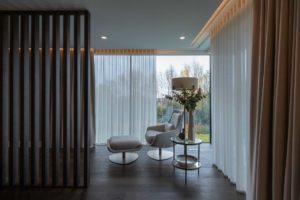There really is nothing more frustrating than technology that seems to work against you rather than for you. In this blog we’ll give you a few hints and tips on how best to futureproof your home, from a technology point-of-view.
When starting out on a property build or refurbishment, it’s more important than ever to consider how technology might be used within the finished home. Let’s be honest, we’ve all become reliant upon technology in one way or another, whether through choice or necessity, and ensuring those technologies perform reliably and consistently is vital.
Cabling infrastructure
Any technology provider would agree, getting the right cables into the right places is the most important part of the technology solution. Once in place, those cables allow your immediate technology needs to be realised, but also mean the system can grow and adapt with your needs. The most expensive cables are always the ones you neglect to install in the first place.
With a future resilient cable infrastructure installed, hardware can drop into place easily, the backbone of which will be the home network. With almost all electronic devices needing a connection to the Internet, whether that is for delivery of content, ‘App’ based control or for software updates, getting the home network right is vital.
Broadband speed
Consider your incoming broadband speed, do your research online as to what service you can receive at the property. There are several simple to use websites to help gather this information, try Uswitch or Switcheroo and when you’re ready, sign-up for the fastest package you can justify.
Think of the incoming broadband like a pipe into the house; a small pipe will only carry a little information, if several rooms are demanding content from the Internet, then it’ll end up being drip-fed. With a big pipe coming in, every room in the house could be pulling lots of content from the Internet simultaneously, with less drop-outs or buffering.
WIFI coverage
You’ll need to make sure that your portable devices, such as smartphones and tablets, have a connection throughout the home. But have you thought about how your smart heating control might function? Or how the smart speakers you’ve bought online might connect?
The most reliable way to achieve full WiFi coverage is to have wireless access points dotted around the house, each being cabled back to your main broadband router. This means getting data cables into the right places whilst also considering how much range you’ll get from each repeater, which all depends upon the building materials used in the home.
We can map out the WiFi coverage patterns within a building, so get in touch with us at the earliest stage so that this can be fully considered by our design team.
Audio
It’s now more accessible than ever to have a house-wide music system, controllable via simple Apps on your portable devices, allowing each member of your family to choose what they want to listen to wherever they are in the home. There are off-the shelf, freestanding products that can offer this functionality, with strong WiFi coverage being key for these to function. A centralised wiring method will give you the most flexibility though, also allowing you to choose which hardware you use later down the line. Wiring speaker cables back from each room to a single ‘hub’ point somewhere in the home would be our recommendation as it means all the equipment, except the speakers, is hidden away from view.
Visual
The visual side is again another technology reliant upon the Internet. Almost every television, satellite receiver box or media player will need to pull content from the Internet, from your favoured subscription platform or on-demand catchup providers. There will come a time that aerial and dish connections are a thing of the past, but we’re not there yet, so make sure you consider coaxial cable points behind all of your visual display devices, along with data cables, for that all important Internet connectivity. Those data cables also allow for centralised video sources to be made available around the home, without the clutter of equipment in each room.
Lighting control & window treatments
Lighting control and motorised window treatments are one of the true luxuries in an integrated home. These allow a level of automation, such as garden lights coming on just before the sun sets, with blinds automatically closing for your privacy, but more importantly, they simplify how you use your lighting. Perfectly tailored lighting scenes can be set for how you use your home, recalled via a single button press on an elegant wall keypad. Gone are the days when you need to remember what all the different switches and rotary dimmers do on a wall. These control packages can be wireless, for retrofit projects, but if you are doing more comprehensive work on a property, it’s best to wire centrally. Lighting circuits would run back to a central location in the home, along with low-voltage keypad cables too.
Home security
Another consideration is your home security, with gate intercoms, CCTV cameras and alarms all now being commonplace in residences. With most intercoms and CCTV solutions being network based, the cabling infrastructure has been simplified. Run data cables from intercom panels and cameras back to the centralised ‘hub’ location in the house.
Future resilience
The pace at which technology changes is mind-blowing at times, you don’t have to look back too far to a world without emails on mobile phones, tablets for reading your favourite newspaper and almost every song and movie being accessible at the touch of a button. Keeping equipment centralised in your home makes the inevitable upgrades and equipment replacement far easier and often more cost-effective. Ensure that all your incoming services terminate here, including telephone lines, aerials and satellite dish feeds. This ‘hub’ method also means that signals can be rerouted or changed along with your needs, or when your family grows, all from one location with no disruption elsewhere in the home.
Electrical considerations
Make sure that the electrical supply to your centralised hub location is kept on an independent electrical ring-main, so that it remains unaffected by other appliances used around the home.
Ventilation & Cooling
Ventilation of this space is an important early consideration; cooling may even be required on projects with a higher technology demand. Our design team can estimate the heat output from all centralised equipment to aid with air-conditioning design.
If you need help futureproofing your smart home, get in touch with our expert design team today enquiries@cleverass.com




